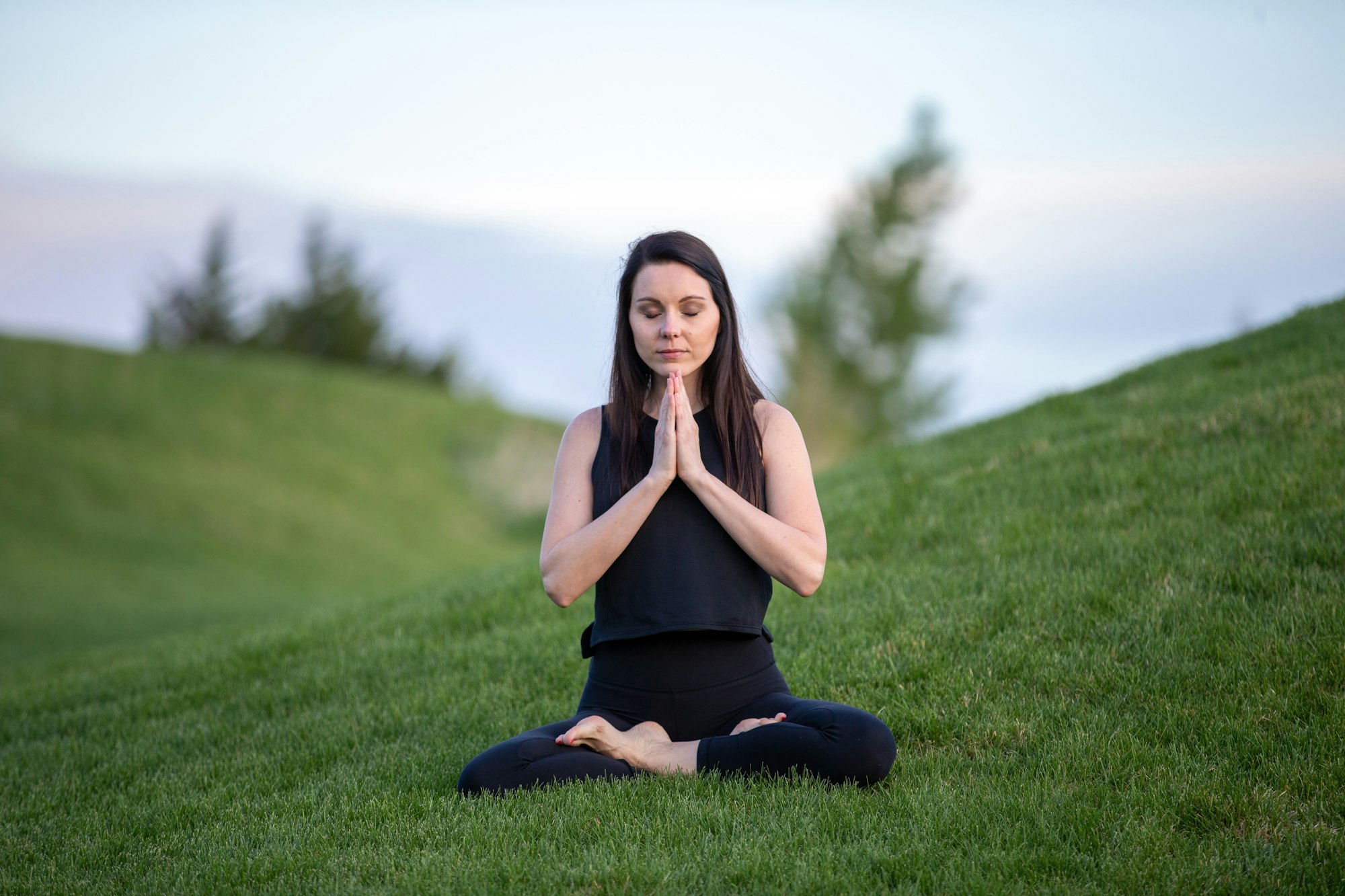Breathing is something we do every day, every minute, without much thought. But did you know that how you breathe can have a significant impact on your performance and well-being in sport and exercise? Breath control and relaxation techniques are methods of regulating your breathing pattern, rhythm, and depth to achieve various physical and mental benefits. They can help you improve your endurance, strength, speed, power, concentration, confidence, and recovery.
Many elite athletes use breath control and relaxation techniques to enhance their performance psychology and manage their mental health. It is perhaps one of the most commonly used techniques in sport and exercise psychology. For example, swimmers use rhythmic breathing to synchronize their strokes and reduce drag. Runners use deep breathing to increase their oxygen intake and reduce fatigue. Martial artists use explosive breathing to generate force and power. Golfers use calm breathing to steady their nerves and improve their accuracy.
But you don't have to be an elite athlete to benefit from breath control and relaxation techniques. Whether you are a casual exerciser, a fitness enthusiast, a competitive athlete, or someone who is simply looking to get involved in physical activity, learning how to breathe better can help you achieve your goals and enjoy your activities more. Some of the benefits of deep breathing include:
- Lowering your blood pressure and heart rate
- Reducing your stress and anxiety levels
- Improving your oxygen exchange and blood circulation
- Enhancing your mental focus and clarity
- Relaxing your muscles and joints
- Boosting your immune system and overall health
In this article, I will explore some of the most effective breath control and relaxation techniques for sport and exercise. I will explain what they are, how to do them, and when to use them. I will also provide some tips and exercises to help you practice them. By the end of this article, you will have a better understanding of how to breathe better for optimal performance in sport and exercise.
Diaphragmatic Breathing
Diaphragmatic breathing, also known as abdominal breathing, belly breathing, or deep breathing, is a technique that involves using your diaphragm, a large muscle at the base of your lungs, to breathe more efficiently. The diaphragm is the main muscle responsible for breathing, but many people tend to use their chest and shoulder muscles instead, which results in shallow and rapid breathing. Diaphragmatic breathing can help you breathe more deeply and slowly, filling your lungs with more air and improving your oxygen exchange.
Diaphragmatic breathing can also help you improve your lung capacity, respiratory efficiency, and core stability. Lung capacity is the amount of air your lungs can hold, and respiratory efficiency is how well your lungs can deliver oxygen to your blood. By practicing diaphragmatic breathing, you can increase both of these factors and enhance your endurance and performance in sport and exercise. Similarly, core stability is the ability of your abdominal and back muscles to support your spine and pelvis. By engaging your diaphragm, you can strengthen your core muscles and improve your posture and balance.
To practice diaphragmatic breathing, follow these steps:
- Find a comfortable position, either lying down or sitting upright.
- Place one hand on your chest and one hand on your belly, just below your ribs.
- Breathe in slowly through your nose, feeling your belly rise as you fill your lungs with air. Your chest should remain still or move slightly.
- Breathe out slowly through your mouth or nose, feeling your belly fall as you empty your lungs of air. You can purse your lips as if blowing out a candle to control the airflow.
- Repeat this process for several minutes, focusing on the movement of your diaphragm and the sensation of breathing.
You can practice diaphragmatic breathing anytime and anywhere, but it may be easier to do it when you are relaxed and not distracted. You can also use it as a warm-up or cool-down exercise before or after sport or exercise. Some tips to help you practice diaphragmatic breathing are:
- Start with short sessions of 5 to 10 minutes and gradually increase the duration as you feel more comfortable.
- Use a timer or a metronome to pace your breathing. You can aim for 4 to 6 breaths per minute, or find a rhythm that suits you.
- Use visual cues to help you focus on your diaphragm. You can imagine a balloon inflating and deflating in your belly, or a wave rising and falling in the ocean.
- Use verbal cues to help you relax and breathe deeply. You can say "inhale" and "exhale" to yourself, or use positive affirmations such as "I am calm" or "I am strong".
Breathing Strategies for Different Types of Exercise
Not all exercises are created equal, and neither are the breathing patterns that go along with them. Depending on the type, intensity, and duration of your exercise, you may need to adjust your breathing accordingly. Here are some general guidelines for breathing during different types of exercise, as well as some specific examples.
Aerobic Exercise
Aerobic exercise is any activity that increases your heart rate and makes you breathe faster, such as running, cycling, swimming, or dancing. The main goal of breathing during aerobic exercise is to deliver enough oxygen to your muscles and organs, and to remove carbon dioxide and other waste products from your body. To do this, you need to breathe deeply and rhythmically, matching your breath to your movement.
For example, if you are running, you can use the 2:2 rhythm we mentioned earlier, inhaling for two steps and exhaling for two steps. This will help you maintain a steady pace and avoid side stitches, which are cramps in your abdomen caused by shallow breathing. If you are cycling, you can inhale for two pedal strokes and exhale for two pedal strokes, or find a ratio that works for you. If you are swimming, you need to time your breaths with your strokes and turns, exhaling underwater and inhaling when your mouth is clear of the water.
The key is to find a breathing pattern that suits your activity level and personal preference. You can experiment with different ratios of inhalation and exhalation, such as 3:3, 4:4, or 2:3, depending on how fast or slow you are moving. You can also use a heart rate monitor or a perceived exertion scale to gauge how hard you are working and adjust your breathing accordingly.
Anaerobic Exercise
Anaerobic exercise is any activity that requires short bursts of intense effort, such as sprinting, jumping, or lifting heavy weights. The main goal of breathing during anaerobic exercise is to generate power and force, and to prevent injury and fatigue. To do this, you need to breathe forcefully and explosively, using your abdominal muscles and diaphragm.
For example, if you are sprinting, you can use a 1:1 rhythm, inhaling for one step and exhaling for one step. This will help you increase your speed and oxygen delivery. If you are jumping, you can exhale on the upward movement and inhale on the downward movement. This will help you create momentum and stability. If you are lifting weights, you can exhale on the exertion phase (when you lift or push the weight) and inhale on the relaxation phase (when you lower or pull the weight). This will help you brace your core and protect your spine.
The key is to avoid holding your breath during anaerobic exercise, as this can cause a dangerous spike in blood pressure and reduce oxygen flow to your brain. You should also avoid hyperventilating or breathing too fast, as this can cause dizziness and nausea. You should breathe at a rate that matches your intensity level and allows you to complete your reps or sets safely and effectively.
Advanced Relaxation Techniques
Besides diaphragmatic breathing, there are other relaxation techniques that involve breath focus, such as progressive muscle relaxation, meditation, and calming imagery. These techniques can help you cope with anxiety, pain, fatigue, and distraction that may interfere with your sport and exercise performance and enjoyment. They can also help you calm your mind and body before or after a stressful event, such as a competition or a challenging workout.
Progressive Muscle Relaxation
Progressive muscle relaxation (PMR) is a technique that involves tensing and relaxing different muscle groups in your body, one by one. This can help you release physical tension and become more aware of the sensations in your body. PMR can also help you relax your breathing and lower your heart rate and blood pressure.
To practice PMR, follow these steps:
- Find a comfortable position, either lying down or sitting upright.
- Breathe deeply and slowly, using your diaphragm.
- Start with your feet and toes. Tense the muscles in your feet as hard as you can for 5 seconds, then relax them completely. Notice the difference between tension and relaxation.
- Move up to your lower legs. Tense the muscles in your calves for 5 seconds, then relax them. Feel the tension leaving your legs.
- Continue with the rest of your body, working your way up to your head. Tense and relax each muscle group for 5 seconds each, including your ankles, knees, thighs, hips, buttocks, stomach, chest, back, shoulders, arms, hands, neck, face, and scalp.
- When you finish, take a few moments to enjoy the feeling of relaxation throughout your body.
You can practice PMR anytime and anywhere, but it may be especially helpful before going to bed or when you feel stressed or tense. You can also use it as a warm-up or cool-down exercise before or after sport or exercise. Some tips to help you practice PMR are:
- Focus on the contrast between tension and relaxation. Try to make the tension as strong as possible without causing pain or discomfort, and then let it go completely.
- Coordinate your breathing with the muscle movements. Inhale as you tense the muscles, and exhale as you relax them.
- Use verbal cues to help you focus on each muscle group. You can say "tense" and "relax" to yourself, or use positive affirmations such as "I am releasing all the tension from my feet" or "I am relaxing my shoulders".
- Use visual cues to help you imagine the tension leaving your body. You can picture a wave of relaxation washing over you, or a colour changing from dark to light.
Meditation
Meditation is a technique that involves focusing your attention on a single object, thought, sound, or sensation, such as your breath, a word, a mantra, a sound, or a feeling. This can help you quiet your mind and reduce distracting thoughts and emotions. Meditation can also help you enhance your concentration, awareness, and self-control.
To practice meditation, follow these steps:
- Find a comfortable position, either lying down or sitting upright.
- Breathe deeply and slowly, using your diaphragm.
- Choose an object of focus for your meditation. It can be anything that helps you stay focused and relaxed.
- Bring your attention to your object of focus. If it is your breath, notice how it flows in and out of your body. If it is a word or a mantra, repeat it silently or aloud. If it is a sound or a sensation, listen to it or feel it with curiosity and openness.
- Whenever your mind wanders away from your object of focus, gently bring it back without judging yourself. Acknowledge any thoughts or feelings that arise, but let them go without engaging with them. This is an essential element in mindfulness meditation practice.
- Continue this process for as long as you wish.
You can practice meditation anytime and anywhere, but it may be easier to do it when you are relaxed and not distracted. You can also use it as a warm-up or cool-down exercise before or after sport or exercise. Some tips to help you practice meditation are:
- Start with short sessions of 5 to 10 minutes and gradually increase the duration as you feel more comfortable.
- Use a timer or an app to guide you through the meditation. You can find free apps and online recordings of different types of meditations.
- Use headphones or earplugs to block out any external noise that may interfere with your meditation.
- Be patient and compassionate with yourself. Meditation is not about achieving perfection or emptying your mind completely. It is about training your mind to be more focused and calm.
Calming Imagery
Calming imagery is a technique that involves using your imagination to create a mental image of a peaceful and pleasant place, such as a beach, a forest, or a garden. This can help you evoke positive emotions and sensations, such as happiness, calmness, and warmth. Visualizing calming imagery can also help you cope with negative emotions and sensations, such as fear, anger, and pain.
To practice calming imagery, follow these steps:
- Find a comfortable position, either lying down or sitting upright.
- Breathe deeply and slowly, using your diaphragm.
- Choose a place that you find relaxing and enjoyable. It can be a real or an imaginary place, as long as it makes you feel good.
- Close your eyes and imagine yourself in that place. Use all your senses to make the image as vivid and realistic as possible. See the colours, shapes, and details of the place. Hear the sounds, smells, and tastes of the place. Feel the sensations of the place, such as the temperature, the texture, and the movement.
- Stay in that place for as long as you wish. Enjoy the feeling of relaxation and happiness that it brings you.
You can practice calming imagery anytime and anywhere, but it may be especially helpful when you are stressed or anxious. You can also use it as a warm-up or cool-down exercise before or after sport or exercise. Some tips to help you practice calming imagery are:
- Use photos or videos to help you create the image of your place. You can look at them before or during your imagery session to enhance your visualization.
- Use music or sounds to help you create the atmosphere of your place. You can listen to them before or during your imagery session to enhance your auditory experience.
- Use objects or scents to help you create the sensations of your place. You can touch them or smell them before or during your imagery session to enhance your tactile and olfactory experience.
Conclusion
Breath control and relaxation techniques are powerful tools that can help you improve your performance and well-being in sport and exercise. By learning how to breathe better, you can enhance your physical and mental health, reduce stress, and cope with challenges. In this article, I have explored some of the most effective breath control and relaxation techniques for sport and exercise, such as diaphragmatic breathing, breathing strategies for different types of exercise, progressive muscle relaxation, meditation, and calming imagery. I have also provided some tips and exercises to help you practice them.
I encourage you to try these techniques and see how they work for you. You can start with simple diaphragmatic breathing and then experiment with other techniques that suit your needs and preferences. You can practice them anytime and anywhere, but especially before or after sport or exercise. You can also combine them with other positive coping methods, such as thinking clearly, finding humor, practicing positive self-talk, problem-solving, goal-setting, managing time and priorities, exercising regularly, eating a healthy diet, getting enough sleep, spending time outside, and reaching out to supportive family and friends.
By incorporating breath control and relaxation techniques into your daily routine, you can create a reserve of inner calm and resilience that will help you perform better and enjoy your sport and exercise activities more. Remember that breath control and relaxation are skills that can be learned and improved with practice. The more you practice them, the more benefits you will experience.
If you enjoyed reading this article, you may also like this article that summarizes 10 Effective Mental Strategies for Sports Performance Enhancement:















Discussion